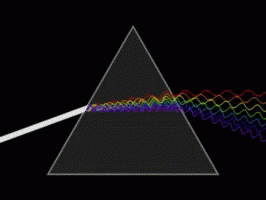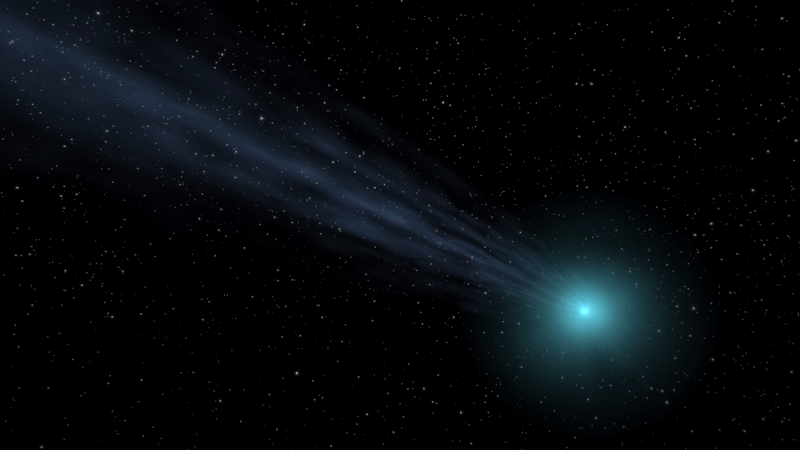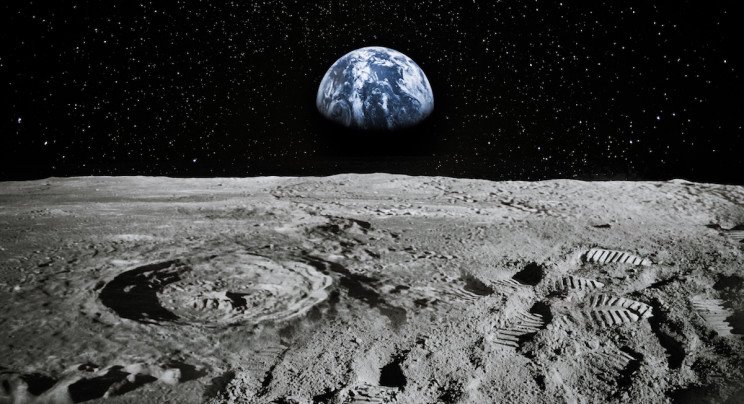Astral Projections Online June 2023
Check our Website for updated content at www.astra-nj.com
Club Presentations Wanted:
Does anyone have any astronomy items of interest to share with the membership?
Please let us know at Club Contacts.
Club dues and membership. If you renew after March 31 you will be renewed as a new member.
ASTRAL PROJECTIONS ONLINE (APO for short) is an email-linked publication for members only. If you exit APO to the club website or other resources you will need to use the emailed link again to get back to it. If you wish to retain a copy please bookmark or refer back to the email. We will make all efforts to post by the first week of the month.
Submissions Welcome: Members are invited to submit articles, photos, news, or stories for inclusion with Astral Projections Online. Please contact the ASTRA Webmaster.
Event Calendar
ASTRA’s next meeting will be Friday, June 9, 2023, at 7 PM EST. This will be an in-person meeting at Novins Planetarium - Building 13.
EVENT Cancellations: Members will receive email notifications of an event cancellation.
Upcoming June ASTRA Meeting
For our June meeting, we’ll have a doubleheader with Sam Granovsky and Vic Palmieri both providing presentations.
First up, Sam with the Spectroscopic Categorization of Bright Stars.
Followed by Vic with the Saturn Family of Rockets.
Upcoming Star Parties
Public - Jakes Branch Star Party - June 10 - 9 PM
Public - Cloverdale Farms Star Party - July 15 - 9 PM
Public - Jakes Branch Star Party - July 22 - 9 PM
Public - Jakes Branch Star Party - August 19 - 9 PM
Public - Jakes Branch Star Party - September 16 - 8 PM
Public - South Seaside Park Environmental Society Star Party - TBA
Public - Island Beach State Park Moonlight Hike - Every Friday at 7 PM (Parking Lot 13)
July 7, July 14, July 21, July 28
August 4, August 11, August 18, August 25
Upcoming County & State Park Presentations 2023
Public Outreach Presentations, if any member wishes to support ASTRA outreach efforts with the public, please let Vinny, Ro, or Jim know of any interest.
County & State Park presentations require a registration fee, call the hosting park to reserve.
Island Beach State Park June 3 - 8 PM to 11 PM - Full Moon Party - Parking Lot 13 - Not an ASTRA event, it’s a full moon which isn’t the greatest for observing. Jim Webster will have binoculars on the beach and discuss the impact of light pollution. Registration is required.
Island Beach State Park - June 17 - 11 AM to 1 PM - SciStarter Earth Science and Dark-Sky presentations at Interpretive Center. Registration is required.
Island Beach State Park - June 21 - 5 PM to 9 PM - Parking Lot 13 - This event is on a Wednesday evening. We’ll have a solar telescope set up for the early evening before the sun sets.
Website Updates …
Please visit our club website. We continue to have additional updates, if there is some content that would be useful to members please let us know.
"If it’s a new planet, sign me up. I’m tired of driving around the block, boldly going where hundreds have gone before in orbit around Earth - give me a place to go and I’ll go”
- Neil deGrasse Tyson, Astrophysicist
Event Reports
May 10 - ASTRA was invited to the Scouts Leadership event. Presented a brief overview of ASTRA. If the scouts are looking for astronomy observing they should come to our public star parties. Anyone interested in becoming a merit badge counselor should reach out to the Jersey Shore Council. We also presented Dark Sky International light pollution and SciStarter citizen science.
May 18 - Private event. Milkyway Photography for ASTRA member, Elizabeth Ford Schultz, Photography Club. It was a good night of sharing and hopeful some will give it a try.
May 20 - Ocean Fun Day at Island Beach State Park. It was a rainy day, so we did not have the anticipated solar observation. In spite of the rain, public attendance was with us, and turned out to be a good day. Thanks go out to Kevin Eak for braving the weather and sharing his telescope for the ASTRA display.
May 13 - Jakes Branch Star Party, was canceled due to weather.
May ASTRA Meeting Summary
For our May ASTRA meeting, we had a strong showing from the membership and a presentation on Comets, presented by Ally Nudo and Matthew Michota.
This was their first presentation and they made it through okay. Looking forward to more presentations from them in the future.
Our Nearest Neighbor
Let’s explore some interesting features, facts, or myths about our nearest neighbor, the Moon. Without it, life on Earth would be totally different, if not at all.
Names of the Full Moons
We’ve all heard the different names for the full moon and even during club meetings have discussed this topic. It’s a historical reference that was actually used for hundreds of years and had actual purpose.
Full moon names date back to Native Americans, of what is now the northern and eastern United States. Those tribes of a few hundred years ago kept track of the seasons by giving distinctive names to each recurring full moon. Their names were applied to the entire month in which each occurred and could differ between tribes.
Colonial Americans adopted some of the Native American full Moon names and applied them to their own calendar system (primarily Julian, and later, Gregorian). … Eastern Trail
Additional information can be found at Space.com, Old Farmer’s Almanac, and NASA Space Place.
Outreach material below is distributed free for public outreach.
Around The Web
Eye Pieces
Eye Pieces can really make a big difference in your observations and star parties. They can also become a major obsession.
Linked is Space.com article on 2023 best eyepieces.
Also a 2006 article from Sky & Telescope.
Last up is a recent video from Ed Ting.
On the lighter side of astronomy …
Members Submitted Articles & Items
Whatever it is, the way you tell your story online can make all the difference.
For more go to NASA Jet Propulsion Laboratory webpage: What’s Up: Skywatching Tips From NASA
This article and images are distributed by NASA Night Sky Network
The Night Sky Network program supports astronomy clubs across the USA dedicated to astronomy outreach.
Visit nightsky.jpl.nasa.gov to find local clubs, events, and more!
Look Up in the Sky - It’s a Bird
By Theresa Summer
Bird constellations abound in the night sky, including Cygnus, the majestic swan. Easy to find with its dazzling stars, it is one of the few constellations that look like its namesake and it is full of treasures. Visible in the Northern Hemisphere all summer long, there’s so much to see and even some things that can’t be seen. To locate Cygnus, start with the brightest star, Deneb, also the northeasternmost and dimmest star of the Summer Triangle. The Summer Triangle is made up of three bright stars from three different constellations – read more about it in the September 2022 issue of Night Sky Notes. “Deneb'' is an Arabic word meaning the tail. Then travel into the triangle until you see the star Albireo, sometimes called the “beak star” in the center of the summer triangle. Stretching out perpendicular from this line are two stars that mark the crossbar, or the wings, and there are also faint stars that extend the swan’s wings.
From light-polluted skies, you may only see the brightest stars, sometimes called the Northern Cross. In a darker sky, the line of stars marking the neck of the swan travels along the band of the Milky Way. A pair of binoculars will resolve many stars along that path, including a sparkling open cluster of stars designated Messier 29, found just south of the swan’s torso star. This grouping of young stars may appear to have a reddish hue due to nearby excited gas.
Let’s go deeper. While the bright beak star Albireo is easy to pick out, a telescope will let its true beauty shine! Like a jewel box in the sky, magnification shows a beautiful visual double star, with a vivid gold star and a brilliant blue star in the same field of view. There’s another marvel to be seen with a telescope or strong binoculars – the Cygnus Loop. Sometimes known as the Veil Nebula, you can find this supernova remnant (the gassy leftovers blown off of a large dying star) directly above the final two stars of the swan’s eastern wing. It will look like a faint ring of illuminated gas about three degrees across (six times the diameter of the Moon)
Look up after sunset during summer months to find Cygnus! Along the swan’s neck find the band of our Milky Way Galaxy. Use a telescope to resolve the colorful stars of Albireo or search out the open cluster of stars in Messier 29. Image created with assistance from Stellarium: stellarium.org
Speaking of long-dead stars, astronomers have detected a high-energy X-ray source in Cygnus that we can’t see with our eyes or backyard telescopes, but that is detectable by NASA‘s Chandra X-ray Observatory. Discovered in 1971 during a rocket flight, Cygnus x-1 is the first X-ray source to be widely accepted as a black hole. This black hole is the final stage of a giant star’s life, with a mass of about 20 Suns. Cygnus x-1 is spinning at a phenomenal rate – more than 800 times a second – while devouring a nearby star. Astronomically speaking, this black hole is in our neighborhood, 6,070 light years away. But it poses no threat to us, just offers a new way to study the universe.
While the black hole Cygnus x-1 is invisible with even the most powerful Optical telescope, in X-ray, it shines brightly. On the left is the optical view of that region with the location of Cygnus x-1 shown in the red box as taken by the Digitized Sky Survey. On the right is an artist’s conception of the black hole pulling material from its massive blue companion star. (Credit: NASA/CXC chandra.harvard.edu/photo/2011/cygx1/
Check out the beautiful bird in your sky this evening, and you will be delighted to add Cygnus to your go-to summer viewing list. Find out NASA’s latest methods for studying black holes at www.nasa.gov/black-holes.
Let’s Explore Space - What’s in the Sky June 2023.
Pinwheel Galaxy - M101
The Pinwheel Galaxy is a face-on spiral galaxy 21 million light-years away from Earth in the constellation Ursa Major. It was discovered by Pierre Méchain in 1781 and was communicated that year to Charles Messier, who verified its position for inclusion in the Messier Catalogue as one of its final entries.
Wikipedia
Radius: 85,000 light-years
Apparent mass: ~1,000 billion M☉
Magnitude: 7.9
Distance to Earth: 20.87 million light-years
Constellation: Ursa Major
Coordinates: RA 14h 3m 13s | Dec +54° 20′ 57″
Stars: 1 trillion
At magnitude +7.9, it can be glimpsed in binoculars or small telescopes from dark sites. However, this galaxy suffers from low surface brightness and in bad seeing conditions or light-polluted areas is sometimes difficult to spot even with 200mm (8-inch) scopes. M101 is best seen from the Northern Hemisphere during the months of March, April, and May.
APO Editor Note: We are highlighting M101 in the June APO due to the excitement of the recent Super Nova activity.
A nearby star has exploded and humanity's telescopes are turning to monitor it. The supernova, dubbed SN 2023ixf, was discovered by Japanese astronomer Koichi Itagaki and subsequently located on automated images from the Zwicky Transient Facility. SN 2023ixf occurred in the photogenic Pinwheel Galaxy M101, which, being only about 21 million light-years away, makes it the closest supernova seen in the past five years, the second closest in the past 10 years, and the second supernova found in M101 in the past 15 years. Rapid follow-up observations already indicate that SN 2023ixf is a Type II supernova, an explosion that occurs after a massive star runs out of nuclear fuel and collapses. The featured image shows the home spiral galaxy with the supernova highlighted, while the roll-over image shows the same galaxy a month before. SN 2023ixf will likely brighten and remain visible to telescopes for months. Studying such a close and young Type II supernova may yield new clues about massive stars and how they explode.
Image Credit & Copyright: Craig Stocks / Source: science.nasa.gov / Published: May 23, 2023
Tonight’s Sky: June
Look for the Hercules constellation, which will lead you to a globular star cluster with hundreds of thousands of densely packed stars. You can also spot Draco the dragon, which will point you to the Cat’s Eye Nebula. Keep watching for space-based views of globular star clusters and the nebula.
Visit the STScI which produces Hubblesite.org video overviews for Tonight’s Sky.
They can be found both on Facebook and stsci.edu.
Submissions Welcome
Members are invited to submit articles, photos, news, or stories for inclusion with Astral Projections Online. Please contact the ASTRA Webmaster.























